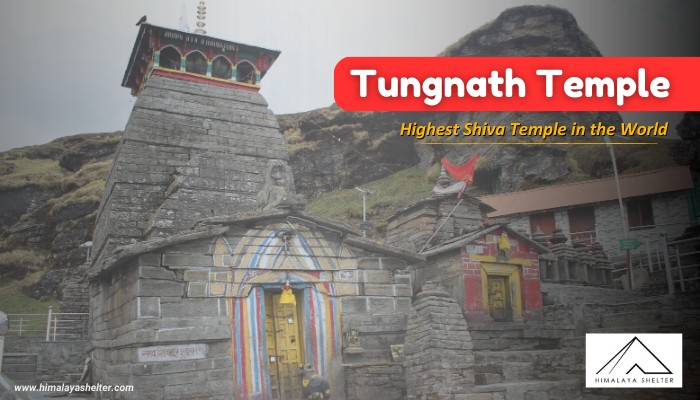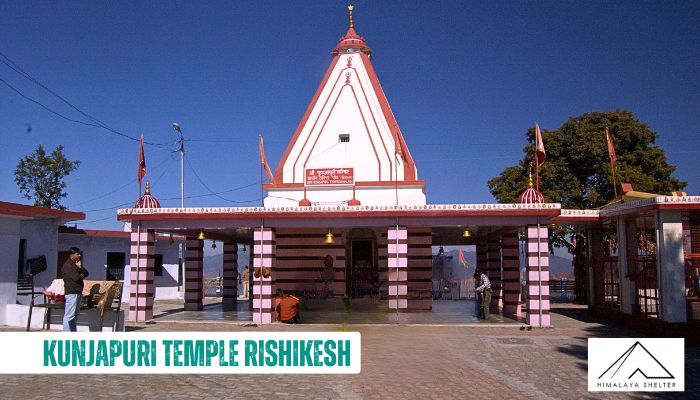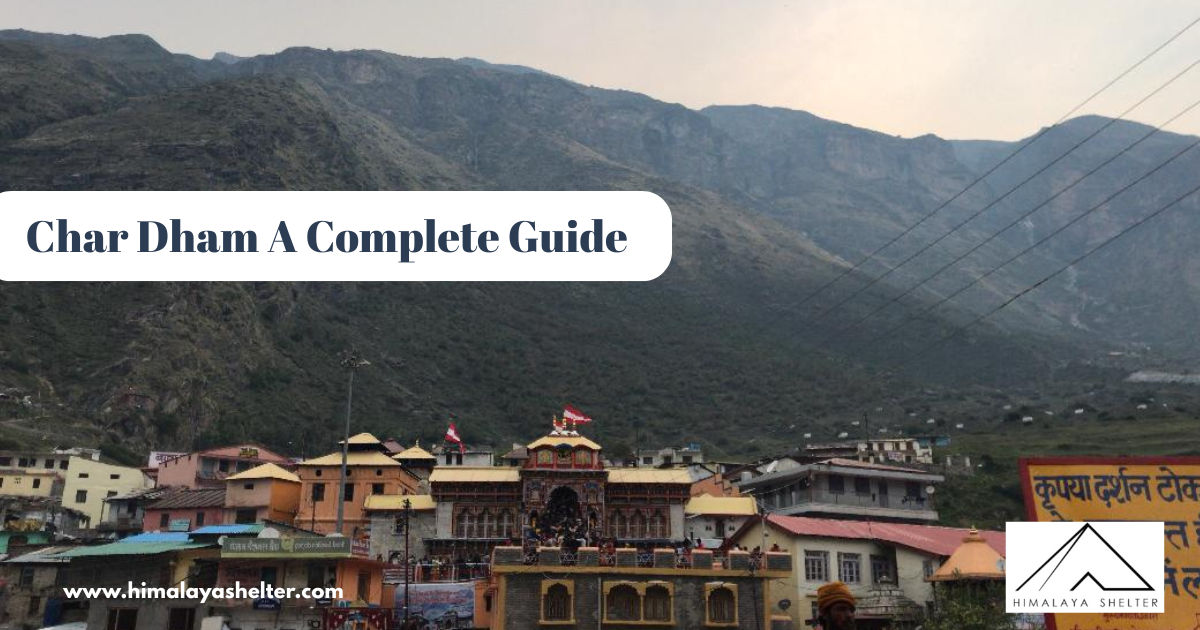
Panch Kedar Trek
TREK DIFFICULTY
Moderate - Difficult
TREK DURATION
13 Days
HIGHEST ALTITUDE
12,959 Feet
GROUP SIZE
12
TREK DISTANCE
160 Km
BASECAMP
Panch Kedar | Uttarakhand
BEST TIME
May to June and September to October
PICKUP POINT
Dehradun (Prince Chowk)
Panch Kedar Trek Overview
Panch Kedar Trek is one of the most scenic spiritual journeys in Uttarakhand. The beauty of Panch Kedar cannot be explained in words. Your every day on the trek will feel like blessings. These temples are situated in beautiful locations. Every temple has its unique charm. This two week trek can be a lifetime experience.
Panch Kedar trek is a combination of treks to five holy shrines of Lord Shiva in the Kedarnath valley. The five temples are Kedarnath (3,583 m), Tungnath(3,680 m ), Rudranath (2,286 m), Madhyamaheshwar (3,490 m) and Kalpeshwar (2,200 m). Panch Kedar Trek is undoubtedly the most popular trek among the devotees of Lord Shiva. Each of these temples has its own mythological significance. However, these Panch Kedar temples form an ally owing to a legend dating back to Mahabharata.
Panch Kedar Story
After the battle of Mahabharata, the Pandavas were on their journey of repentance. They were seeking forgiveness from Lord Shiva for the sinful act of killing their family members in the battle. Lord Shiva was spotted by Bhima in the form of a bull or Nandi, near Guptkashi. Before the Pandavas could reach the bull, it disappeared. It then rematerialized itself in different parts of the valley. The Hump appeared at Kedarnath, navel and torso at Madhyamaheshwar, hair at Kalpeshwar, head at Rudranath and 'bahu' or limbs at Tungnath. The Pandavas built temples at each of these spots and worshipped Lord Shiva. The Panch Kedar legend is indeed quite an intriguing one. Besides its spiritual significance, Panch Kedar Trek is also popular among nature and wildlife enthusiasts. Major part of the Panch Kedar Trekking trail falls in Kedar Wildlife Sanctuary. However, the Chopta-Tungnath range needs a special mention with its 240 species of birds. It assures the spotting of local birds like Himalayan Monal, Himalayan Griffon, Scarlet Finch, Hill Patridge and Himalayan Swiftlet. Besides these local birds, many species of migratory birds are also spotted in this region. Wild flowers, colorful Rhododendrons and a variety of reptiles on forest trails during Panch Kedar Trek are among the other natural attractions.

Significance Of Panch Kedar Trek
The Panch Kedar Temple Tour is a complete journey. The trek is more like an odyssey to nature and diviness. These are five temples located in different regions of Garhwal. These temples are related to Mahabharata. Due to this, thousands of Hindu devotees visit these temples. Kedarnath is the most popular and biggest of these Panch Kedar. People walk for hours to reach Kedarnath. Every temple of Panch Kedar is different and has a serene environment.
A Look at Each Kedar
-
Kalpeshwar: The Hair
Kalpeshwar is dedicated to Shiva’s matted hair (Jaṭā). This is the only Kedar temple that is open all year. The temple is in the pretty Urgam Valley. The walk here is short and easy from the village. The shrine is inside a small cave. It feels very private. This is good for meditation. The valley is known for its fields and apple trees. Its year round access and cave location make it special
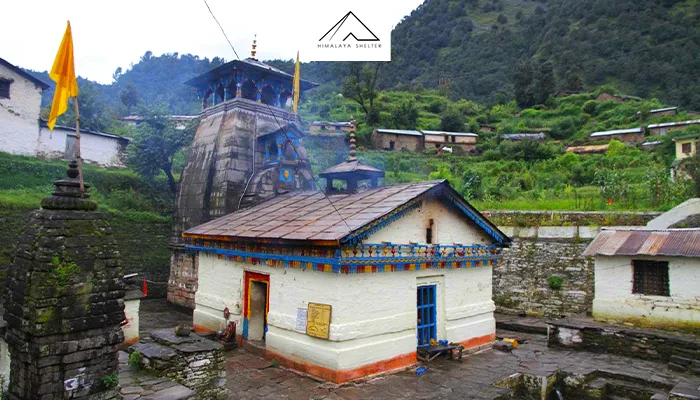
.
2. Kedarnath: The Hump
Kedarnath is the most famous Kedar. It is one of the twelve Jyotirlingas of Shiva. The temple holds a cone shaped rock. People worship it as the bull's hump. The temple sits right against the Kedarnath peak. This shows both old building skill and strong faith. The 16 km trek from Gaurikund is tough. But it leads to a great spiritual and natural spot.
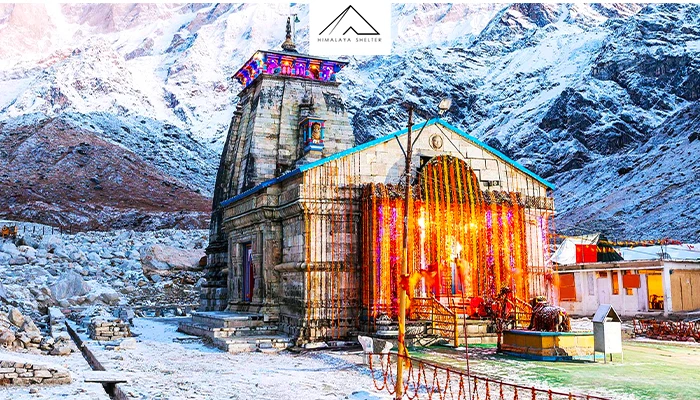
3. Madhyamaheshwar: The Navel
This temple is where Lord Shiva's navel and middle body appeared. Inside, the main idol is a navel shaped stone. The trek starts from Ransi village. It is known for its beauty. The trek goes through remote villages and dense forest and open meadows where you will get views of Chaukhamba and kedarnath. The spiritual feeling fully mixes with the beautiful nature here. A short walk up to Budha Madhyamaheshwar gives you a big view of the mountains.
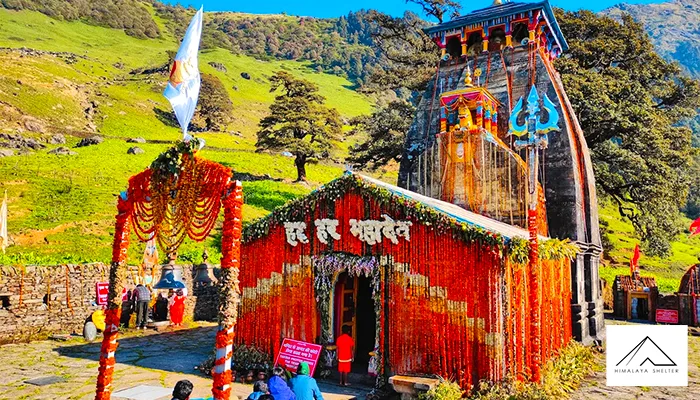
4. Tungnath: The Arms
Tungnath holds the arms (Bahu) of Lord Shiva. It is the highest Shiva temple in the world at 3,680 m. The trek is the shortest of the five. It starts from Chopta, which people call 'Mini Switzerland.' The path is steep but easy to follow. You walk through forests that open up to wide meadows.
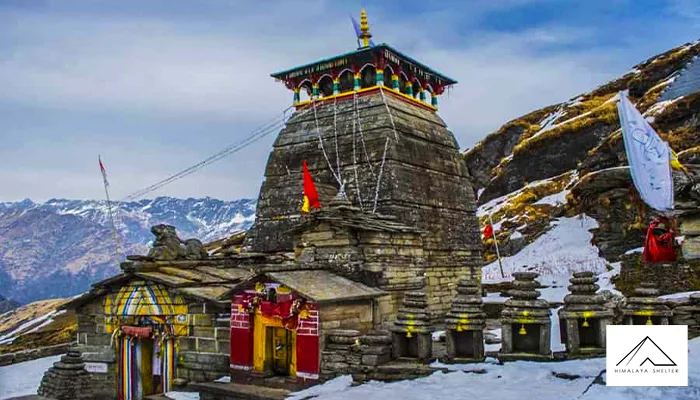
5. Rudranath: The Face
This is the place where Lord Shiva’s face (Mukha) showed up. Rudranath is a temple made from natural rock. It is surrounded by thick forests and big meadows. Here, Shiva is worshipped as Neelkanth Mahadev. The trek to Rudranath is the hardest. It is remote. The trail is often confusing. This quiet place is where you can feel a strong, real spiritual connection with the wild Himalayas. Holy water pools like Surya Kund are near the temple.
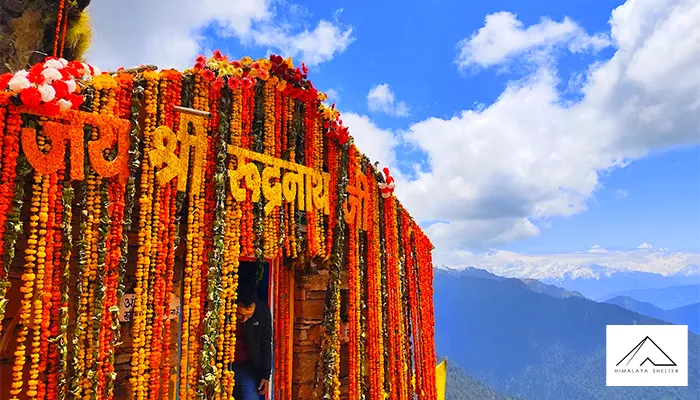
Day 1: Dehradun to Karanprayag via Devprayag & Rudra Prayag
Drive distance: 203 km | Altitude: 1,457 m ( 4,762 feet)
Day 2: Karnaprayag - Urgam - Kalpeshwar - Urgam
Drive: 2.5 hours | Trek Distance: 3 km
Day 3: Urgam to Kalgot/Dumak
Trek Distance: 12 Km | Altitude: 2,215 m (7,265 feet)
Day 4: Kalgot\Dumak to Pannar Bugyal
Trek Distance: 9 km | Altitude: 3400 m (11,152 feet)
Day 5: Panar - Rudranath/Panch Ganga
Trek Distance: 12 km | Altitude: 3,600 meters (about 11,800 feet)
Day 6: Panchganga - Anusuya devi via Naola Pass to Mandal drive to Chopta
Trek Distance: 8 km
Day 7: Chopta - Tungnath Trek and further to Chandrashila
Trek Distance: 3 km | Altitude: 3,950 m( 12,956 feet)
Day 8: Chopta - Deoria Tal - Sari
Trek distance: 12 - 13 km
Day 9: Sari to Ransi (1 hour Drive) & trek to Madhyamaheshwar trek
Drive: 1 hour | trek distance: 12 km | Altitude: 3497m
Day 10: Madhyamaheshwar to Ransi - Drive to Guptkashi
Trek distance: 12 km | Drive: 2 hours
Day 11: Guptkashi to Gaurikund drive and trek to Kedarnath (3,584 m)
Drive: 1.5 hours | Trek Distance: 16 km | Altitude: 3,584 m(11,755 feet)
Day 12: Kedarnath to Gaurikund to Rudraprayag
Trek Distance: 16km
Day 13: Rudraprayag to Dehradun
Plan the Panch Kedar Treks 2025-2026 with us. The company is offering best trekking services for Panch Kedar Trek. The trek is long and requires lots of preparations. Leave all the headache to us and enjoy your trek. We have been working for years and always do our best to provide the best experience.
The Himalaya Shelter team is also offering the customized trekking services. You plan the Panch Kedar Route Map and we will prepare the itinerary for you. You can choose your stays, types of meals, and many other things. The guides and supporting staff work their best to offer good services. We work closely with the locals to offer the authentic touch to your clients.
The Panch Kedar Trek Uttarakhand is an entire trail. Your trek to Panch Kedar means a little closer to the divine. All these temples are devoted to Lord Shiva but have different significance. Even thinking about this means you are on the path of spirituality. It is more like combining five treks in one complete trek. Every temple has a unique story connected to Pandavas. The Panch Kedar Trek is a journey to reunite yourself to nature and diviness.
Kedarnath Temple
This temple is most popular among the Panch Kedars and Chota Char Dham. The Kedarnath doesn’t require any introduction as everybody knows about this temple. Every year thousands of devotees visit Kedarnath Baba. This is the place where the Hump of the Bull (Lord Shiva) appeared. You have to walk for hours to reach Kedarnath Temple.
Tungnath Temple
The trek to Tungnath temple is mainly rated as easy. The distance is short and the ascends are also very gradual. The trek is simple and you can complete it without any difficulty. This is one of the Panch Kedars where the arms of Lord Shiva appeared. The location of Tungnath temple is also very good.
Rudranath
The trek to Rudranath temple is more challenging than any other temples of Panch Kedar. Your trek to Rudranath temple passes through forests and meadows. This is the place where the Face of Lord Shiva appeared. The location of the temple is good but you should be mentally and physically prepared for this trek.
Madhyamaheshwar
This Shiva temple has some of the most beautiful sceneries. Madhyamaheshwar is the place where the Navel and the Stomach of Lord Shiva appeared. Your trail to Madhyamaheshwar temple passes through big alpine meadows. The trail to this temple is serene and peaceful. The journey to Madhyamaheshwar is very peaceful.
Kalpeshwar
The Kalpeshwar is a temple of Panch Kedar that you can visit anytime of the year. This only temple opens even in the winters. The Kalpeshwar is the temple where the Hairs of Lord Shiva appeared. The trek to the Kalpeshwar temple is easy. You will walk through some beautiful fields and orchards.
Scenic Landscapes And Meadows
Your trails to the Panch Kedar Temples are very scenic and you will feel very delighted while walking on them. Sometimes you will walk through the dense forest areas and sometimes you will see big meadows. The sound of rivers and streams also feel peaceful.
Spiritual Vibes Of The Himalayas
You can feel the spiritual aura on the Panch Kedar Trek Uttarakhand. Every trail leads you to Lord Shiva. The whole region of Panch Kedar Trek is the abode of God. You will feel the presence of spirituality. The flowing rivers like Mandakini and Alaknanda give the sense of purity.
Local Culture And Villages
The Panch Kedar Temple Tour is a great trip to experience the local culture of Garhwal. The trails to the temples pass through some beautiful villages. You can explore these villages and learn more about their culture. The locals in these regions are very cheerful. They will welcome you with a warm-heart. You can listen to folklore and even enjoy the local traditional meals.
Chopta
Chopta is a small region which is also a basecamp for your Tungnath temple trek. This small region has big alpine meadows. You can camp on these meadows and enjoy the beauty of the surroundings. Chopta is a famous location for the trek-beginners. Explore the meadows of Chopta and spend some good time there.
Badrinath
Badrinath is the part of Chota Char Dhar and Panch Badri. You can also add Badrinath in your spiritual journey. The temple has good connectivity by road and you can add this temple on your trek. You do not have to trek here and can reach the temple easily. There are also some small temples and some other locations like Mana near Badrinath.
Panch Kedar Trek Distance
The Panch Kedar temple trek is about 150 km. Some temples are a few distance from roads like Tungnath. But you have to trek for long hours in temples like Kedarnath. The trek is lengthy but not all sections are difficult. You can trek to temples like Kalpeshwar easily. But temples like Rudranath have difficult terrain.
Panch Kedar Trek Duration
The duration of the trek is about 2 weeks. You will cover many temples in this duration. You will cover five different temples situated in 5 different locations. Walking everyday on a long trek is not very easy. Even the cab ride on the hills is difficult.
Summer Season (May-June)
Summer is the best time for the trek. The temples reopen and the temperature starts rising. The meadows come alive and everything looks beautiful. The trail is usually much easier in summer time.
Monsoon Season (July-September)
You can also plan your Panch Kedar Trek in monsoon. However, this is not a good season for trekking. The Panch Kedar region receives a high amount of rain. You can face landslides and road blocks in many areas. The trails become slippery and dangerous.
Autumn Season (October-November)
You can trek to Panch Kedar in autumn. The trails start drying and the weather becomes better. The meadows start turning golden and everything looks perfect. You can trek to Panch Kedar only in early November.
Panch Kedar Trek Route - Nearest Railway Station and Airport
You will start the journey to Panch Kedar Trek from Urgam. The nearest railway station will be Rishikesh. It is about 172 km. The nearest airport to Urgam is Dehradun. It is about 220 km from Karnprayag.
Road Connectivity From Dehradun / Delhi
- Delhi To Haridwar: You can find various bus services for Haridwar from Delhi. There are few government buses for Haridwar. If you want more facilities on the bus then look for private bus services.
- Haridwar To Karnprayag: There are few bus services for Karnprayag. More buses are available from Rishikesh. Karnprayag to Urgam: Look for local buses or shared taxi services for Urgam. The shared taxi services to Urgam are limited.
Permits and Entry Requirements
The Panch Kedars do not require any special permit. The temples are the important pilgrimage sites and accessible only a few months of the year. However, there are some permits you need on your Panch Kedar Trek.
- Registration at the trek base points: You have to register in the base points like Gaurikund, Chopta, and Heloang.
- Forest Entry Fee: The trails to Panch Kedar pass some forests and restricted zones. The trekkers have to pay a nominal forest fee to enter those zones.
- ID Proof: Always carry a valid government-issued ID such as Aadhar Card, Pan Card or Passport. You should also carry photocopies of these IDs and some passport sized photos. You may also need the ID Proof in the guesthouses.
Accommodation Options on the Trek
-
Dharamshalas and Aasharms near Temples
You can find Dharamshalas or Aasharms near every temple. These Dharamshalas are very budget-friendly. They are usually located near to the temples. Most of them have very basic facilities.
-
Guesthouses and Lodges in Villages
There are many guesthouses and lodges on the trails to these temples. Guesthouses are better options and they offer more facilities. You can get a private room and other services like hot water, etc.
-
Homestays With Local Families
Many families are now operating Homestays in the villages. You can be the guest and experience the authentic Himalayan lifestyles. They will treat you like a family. These homestays are very cozy.
-
Camping
You can also find camping services on this trek. In places like Rudranath, camping is the best option. You can camp in big meadows like Madhyamaheshwar or Chopta. They have basic facilities but with best exposure to nature.
Food and Water Availability
You won’t find exotic dishes there but you can have fresh and vegetarian options everywhere. There are lots of small restaurants and tea shops along the trails. You can buy bottled water in some places or you can also carry your own bottle and refill it from natural water sources.
Safety Tips For Trekkers
-
Physical Fitness
The Panch Kedar Trek Difficulty level is moderate to difficult. Start doing regular exercises and daily morning walks. You can go for small hikes and train yourself for ascents and descents. Try walking on stairs with a backpack. It will train you in managing load at the trek.
-
Acclimatization
All the temples of Panch Kedar Trek are located below 4000 m. But still people can get AMS symptoms. People with any breathing conditions should acclimatize properly. You should take good rest at night and stay hydrated to prevent any AMS symptoms.
-
Weather Awareness
The weather can change anytime in Himalayan region. You must carry rain gear like rain jacket or poncho with you. You should not attempt walking on steep trails if the weather is not good. Always check for the rain before starting your trek.
Himalaya Shelter offers the best Panch Kedar Trek Packages. From pickups to stays and meals, we provide everything. Our guides are well-familiar to these regions. We take care of permits and over requirements on the trek. Book the Panch Kedar Trek with Himalaya Shelter and forget all the worries.
Our company provides customized trekking services. Plan the Panch Kedar Treks 2025-2026 on your dates. We will plan the best Panch Kedar Trek itinerary for your team. We can customize dates, stays, and even meals for you. You can make add-ons on the trek as you need.
Visit the Panch Kedar Temples
The Panch Kedar Trek is a journey to seek Lord Shiva. On the trek, visit the temples and offer your prayers. Every temple is devoted to Lord Shiva but has a different atmosphere. Some trails are easy, some are difficult but every step on the trek feels worth it.
Experience the Local culture
The trails of Panch Kedar pass from different regions of Garhwal. You can explore the villages and other nearby locations. The centuries old temples and wooden houses tell about the cultural richness. The locals are also very friendly and peace loving.
Beautiful Landscapes
The Panch Kedar route map takes you to some of the most beautiful landscapes of Himalayan region.You will walk through dense forests of oak and pine. Some trails pass through meadows and small streams. Wherever you go, beautiful Himalayas follow you everywhere.
Backpack And Clothing
Look for a backpack, probably 60L that can carry all the items for your 2 week long trek. You can also get a small backpack for the day hikes. Pack a few (5-6) quick-dry t-shirts for the trek. Now pack 3 trekking pants and avoid lowers or jeans. Get a light sweater and a jacket if you are trekking in the early summer or autumn season as snowfall can occur anytime. Pack a suncap to prevent sun tan on the trek.
Footwear
You can get trekking shoes for the trek. If you are new to trekking then avoid buying a pair of shoes just before the trek. Buy the shoes in advance and wear them for about 2 weeks ahead of the trek. It will make your shoes comfortable to your feet.
Personal Care
Get a small zipper bag and pack all the toiletries like toothbrush, etc. Pack SPF50+ sunscreen that prevents sunburn. Now pack a moisturizer and lip balm. Get a powerbank and extra camera batteries.
Day 1: Dehradun to Karanprayag via Devprayag & Rudra Prayag
The journey starts from Haridwar, Haridwar is a sacred pilgrimage site of India. River Ganga is the main attraction and is famous for the iconic Ganga aarti that provides you with a feeling of solitude and spirituality. In the periphery of Haridwar, you can visit Panch Tirth, which includes Gangadwar, Mansa Devi Temple, Chandi Devi Temple on Neel Parvat, Kushwart, and Kankhal.
The journey passes through Rishikesh, Rishikesh is referred to as the Yoga Capital of the World, where people from different places of the world, in search for peace. The Bharat Mata Mandir, Parmarth Niketan Ashram, Triveni Ghat, Ganga Aarti are the major attractions of Rishikesh.
This drive also passes four prayags out of five prayags, also called Panch prayags. The Panch Prayags are places where the River Alkananda confluences five times, then it becomes the Ganga. These five holy sites are Devprayag, Rudraprayag, Karnaprayag, Nandaprayag, and Vishnuprayag.
We embark on this surreal trekking journey, intending to capture the most astounding confluences along the road to Karanprayag. The deep and serene waters of the River Ganga accompany us till Dev Prayag. The Devprayag is a place where the sacred confluence of the River Alakananda and the Bhagirathi forms the Ganga. It is believed that at the time of Ramayana, King Dashrath and his Lord Ram came here for penance. There’s also a Raghunath temple, which is dedicated to Lord Ram. A myriad of Hindus flock at Baitalshila, a natural spring at Devprayag. The main reason being the magical powers of the water to cure skin diseases.
Further along, this topsy turvy drive takes us to Rudra Prayag, a place where the confluence of rivers Alkananda and Mandakini. Rudraprayag, in which Rudra means Shiva, here Narad Muni was appeasing Lord Shiva in regret. Lord Shiva appeared in his Rudra avatar and blessed him. We shall explore this riveting confluence on the last day of our Panch Kedar Trek.
Meanwhile, a theatrical story awaits you at Karnaprayag. The most tragic character of Mahabharat, Karna, is believed to have worshipped the Sun God at this confluence. After being killed by Arjuna in the battle, Lord Krishna cremated Karna at the very site where he had meditated at this confluence. You may even explore the one and only Karna Temple of India perched on a huge boulder at Karanprayag. Besides this, the Uma Devi Temple with its Swayambhu Idol of Devi Parvati is an iconic attraction too.
While the mythology fuels your ecstasy, the sublime sight of the rivers soaked in varied hues of waters make you go wow. Our night stay would be at Karnaprayag.
Day 2: Karnaprayag - Urgam - Kalpeshwar - Urgam
We shall commence the journey after breakfast. Around 2.5 hours of scenic drive via Nandprayag and Gopeshwar brings you to the most beautiful Urgam valley. River Kalpganga and the terraced fields of apple, rajma and potatoes feel like an entirely different world. If you are visiting in mid-summer, the pleasant sight of swaying fields of flowers awaits you. A short hike with the views to marvel you is what you can expect on this beautiful day. Kalpeshwar, the first temple on our Panch Kedar Trek, is ringed by lofty mountains. It acts as an amphitheatre to gaze at the peak like Nanda Devi, the highest peak of the state. Additionally, the view of Mt. Trishul and Nanda Ghunti is also a delight to soul. However, the spiritual vibes of the valley are derived from the ancient legends. The folklore claims it to be the favourites of the sages like Arghya and Durvasa who meditated here.
The main attraction, the stone structure of Kalpeshwar Temple, is quite an ancient construction. It can be reached through a narrow cavernlike path. As per the Panch Kedar legend, the tresses or ‘jata’ of Lord shiva appeared at Kalpeshwar. This fetches it an alternate name of Jateshwar Mahadev. Around 150 meters beyond the temple is another divine spot of Dhyan Badri. It doesn’t fall on Panchbadri list, nonetheless it is a different experience to visit.
Our Panch Kedar trek is planned to let you experience each of the Panchkedars at your pace. Take the advantage of this and relish the views. Optionally, you can prefer to be teleported back in time while listening to the folklores.
Day 3: Urgam to Kalgot/Dumak (2,215 m)
Start your day by quickly basking in the warm sunrays while eating a palatable local breakfast. This is to energise you for the 12 km long trekking trail from Urgam to Dumak. This remote village is surrounded by refreshing waterfalls fed by mountain springs. It is an absolute delight to stay at this village oozing rustic charm.
The trail is easy to moderate with short stretches of gentle ascents. You may take a fancy in chasing the wild butterflies and moths encountered on the way. Your fanciful trek amidst forest might be interrupted by rustling of leaves and cackling calls of langurs. The dance of the sun with the shadows makes this day’s trek all the more dramatic. This easy trail is your chance to experience the colourful flora of Garhwal Himalayas.
Day 4: Kalgot\Dumak to Pannar Bugyal - 3400 mts
This day starts with a scrumptious breakfast followed by a meditative trek amidst forest. Every step feels like a step closer to the almighty. Today’s trek is all about vertical climb, rocky patches and being close to nature. The trail is absolutely breath-taking. You must warm-up yourself with basic exercise before starting the trek to avoid feeling it as ‘breath- taking’ in literal sense.
Take enough water breaks to keep yourself hydrated. This is essential as it is the first day of actual trekking. Also, be alert for the calls of birds around. You may spot Himalayan Monal, Black Drongos or Green Bee Eaters. The trail passes completely through a desolate forest route. Spotting of snakes, wild moths and owls is going to be a thrilling experience.
Pannar Bugyal, as the name clarifies, is an open meadow from where you can see a clear view of Mt.Trishul, Nanda Devi, Nanda Ghunti and Bandarpoochh cliff. The sunset paints the peaks in hues of pink and saffron. Needless to say, it is an awe-inspiring experience for every trekker.
Day 5: Panar - Rudranath/Panch Ganga
Start after a breakfast with the refreshing views. Today’s trail is a mix of ascents and descents. The morning starts with an ascent to reach the ridge. from here the view of the lush green Panar Bugyal can literally leave you speechless. All the major peaks encircling the valley would be visible on and off. During Spring and Monsoon, the ridge welcomes you with vibrant wild flowers and shrubs on both the sides.
The first important spot to cross is Pitradhaar. It is believed to be the point from where our ancestors’ souls have transcended to the other world. Further on the same trail falls Panch Ganga. This is the highest point of the ascent today. This windy spot is decked up with prayer flags and bells. You may rest here for a moment to take a picture or two. The total trekking duration till Panch Ganga is around 3.5 hours. The trail turns moderately easy as you may quickly dart down the valley from here. After a few stretches of ascents and descents, the Shrine of Rudranath is visible. This auspicious site is made more divine by the glistening peaks of Nanda Devi and Kamet. There is small stream called ‘Vaitarini’ near the temple which claims to have the ‘Water of Salvation’. The temple premise has a lot to explore for nature lovers. You must not miss ‘Suraj Kund’, ‘Tara Kund’ and ‘Chandra Kund’. Attend the evening pooja and spend the night under the sky crammed with stars.
Day 6: Panchganga - Anusuya devi via Naola Pass to Mandal drive to Chopta
Trekking route for today is the same till Panchganga. From this spot onwards, the trail goes down towards Naola Pass. During and post-monsoon, Naola Pass is literally a treat to eyes. With its lush green craggy ridge and views to mesmerize, Naola Pass is trekkers’ favourite spot. Not many pilgrims take this route and thus, the path remains exclusive for trekkers.
Anusuya Devi Temple is a small unattended shrine. She was the wife of Rishi Atri. According to one of the mythological events, Brahma, Vishnu and Mahesh visited Devi Anusuya to test her devotion. They came at the same spot in the form of three Brahmins. Her chastity and immense devotion made the three Gods transform themselves into infants. The same infants, Durvasa, Soma and Datatreya are now revered as saints in Devbhoomi Uttarakhand. Hence, the birthplace of these renowned souls makes Anusuya Devi shrine, an important place of worship for the locals.
If time permits, you may take a diversion to explore Atri Rishi Cave. After this charismatic hike on a desolate trail, we shall head straight down to Mandal. From here, Chopta is just 1.5-hours-long scenic drive.
Day 7: Chopta - Tungnath Trek and further to Chandrashila (3,950 m)
It is a relatively moderate 2 KM climb to Tungnath, the highest Shiva Temple at 3470 metres. It is one of the Panchkedars where the ‘bahu’ or the limbs of the bull appeared. The temple is said to have been built in ancient times by the Pandavas. The black-stone temple structure is located just 2-kilometre below the mighty Chandrashila Peak.
The views from here are as exhilarating as the divine legend of Panchkedar. Chopta- Tungnath trek claims to have the shortest approach path from Chopta Road. The cemented steps with 11 scissor cuts unravel the sight that would leave you speechless. Along the climb too, widening valley and the peaks greet at every clearing. The view of the Garhwal Valley clad in varied hues of Rhododendron flowers during the month of March and April is mesmerizing. The Tungnath range is rich in flora and fauna paving way to the establishment of the Botanical Station here. Chopta-Tungnath range also has a decent population of the birds like Golden Eagle, Himalayan Monal, Bearded Vultures, woodpeckers, Upland Buzzard, Ashy Wood-pigeons, and European Goldfinch. Among the animals, the main trail is famous for trekkers being accompanied by Bhutia Dogs all the way up to the peak. If your luck supports, you may encounter spotted deer and musk deer too.
The summit for Chandrashila is just 1 hour or 2 kilometres of a mildly strenuous climb from Tungnath. It is in literal sense an amphitheatre to admire the mountains and valleys. From Chandrashila Summit you can see the snow-capped peaks like Mt. Nanda Devi, Trishul, Nanda Ghunti, Kamet, Bandarpoochh, Neelkanth, Chaukhambha and Kedar Dome. Feel the divinity at the very location where Lord Ram and even the ardent devotee Ravana had once meditated to invoke Lord Shiva. Once you have had enough of this surreal sight, we shall trace back the same path to reach Chopta.
Day 8: Chopta - Deoria Tal - Sari
Deoriatal, at an altitude of 2438 metres, is a long trek of about 12-13 kilometres with descending trail from Chopta. The trail slides through terraced fields, blooming rhododendron flowers and dense patches of Banj Oaks. You can hear and may spot the birds and animals of Chopta-Tungnath Trek range on this trail as well.
Deoriatal is a pristine location encompassed by soaring mountains. Mt. Neelkanth, Chaukhambha, Bandarpoochh, and Kalanag overlook this divine lake. Once upon a time, it was the bathing pond for Gods and Rishis. It has an alternate name of ‘Indra Sarovar’. You must take a stroll around this lake where the mysterious Yaksha appeared to ask questions to Yudhishthira during their exile period.
You may take an opportunity to just sit and feel the serenity punctuated by the calls of birds. The beauty of this lake is impeccable in winters as well. After this rejuvenating experience at Deoriatal, you would hike for 3-km to reach Sari Village. Relax and prepare for the challenging trek of Day 9.
Alternatively if we want to make the day easier, we can drive to Sari from Chopta which will take less than an hour and proceed to trek to Deoria Tal in another hour and a half. On the consecutive day we descend back to Sari and continue our journey ahead to Madhyamaheshwar.
Day 9: Sari to Ransi (1 hour Drive) & trek to Madhyamaheshwar trek
An hour-long drive from Sari through tiny hamlets and cultivated fields takes you to Ransi. This is our base for the 16-Kilometre-trek to Madhyamaheshwar. The trail has varied transition from dense forest trails, swaying farms, Garhwali villages to finally the open meadows of Madhyamaheshwar. A plethora of birds including the endangered species of Himalayan Monal can be spotted on this trail. Musk deer are a common sighting too, thanks to the breeding centre located in the vicinity.
The first of the tiny hamlets on the way to Madhyamaheshwar is Gaundhar. After 2 kilometres from here lies the Madhyamaheshwar Ganga or Madhu Ganga. It is a holy confluence of Saraswati Ganga and Morkhanda Ganga. After some similar chattis or tiny villages like Gaundhar, you finally reach an open meadow of Madhmaheshwar temple.
The sturdily standing Chaukhambha seem to be saluting Lord Madhmaheshwar. The name signifies the middle-part or the ‘navel’ and ‘stomach’ that manifested at this place. A navel- shaped lingam is worshipped at the main shrine. The temples of Devi Saraswati and Ardhnarishwar are among the other shrines in this complex. The older temple is located at a little distance from the current shrine. It is known as Vridh-Madhmaheshwar. Nonetheless, the sublime beauty awaits you after a steep climb above this temple. The little shrine at the bank of the pond is famous as Bura-Madhyamaheshwar. It showcases the sublime vistas consisting of the peaks of Chaukhambha, Trishul, Neelkanth, Panchuli and Kamet. The flabbergasting drama shall not be missed at sunset which is as magical as the vibes here.
We shall spend the night amidst the craggy mountains on the gentle meadows of Madhmaheshwar.
Day 10: Madhyamaheshwar to Ransi - Drive to Guptkashi
After a tranquil night spent at Madhyamaheshwar, now it is the time to pay our prayer to the main Kedarnath shrine. The same route down via chattis that you crossed on your way up takes you back to Ransi. Traversing through the splendid valley created along Mandakini, we shall reach Guptkashi. This is not just a stopover but also a place which holds a great importance in Hindu scriptures.
As per Mahabharata, when Pandavas were searching for Lord Shiva, he was hiding at this very location. The name ‘Guptkashi’ is derived from this instance. Lord Shiva is worshipped here as Vishwanatha and the main shrine is dedicated to Him. Right in front of the temple is the Manikarnika Kund. This kund is supposed to be an underground or ‘gupt’ (hidden) confluence of Ganga and Yamuna. The rivers are supposed to be flowing underground till they manifest at this conjunction.
Today’s route would be glistened by the fluttering flowers of Magnolia or Champaka. These flowers are the speciality of the valley spread around Mandakini. Even the town Guptkashi has abundance of Champaka flowers. It serves as a decor for almost every home. You may shop or refill your wallet with cash at Guptkashi’s small market.
Day 11: Guptkashi to Gaurikund drive and trek to Kedarnath (3,584 m)
Start the long day with a crazy ride to Gaurikund from Guptkashi. The route passes through another holy confluence. Here River Basuki merges with River Mandakini to form the gorgeous Son Prayag. Ice-capped mountain views accompanies you throughout the journey. The motorable road ends at Gaurikund, another town associated with a fanciful legend. Folklore says that Gauri, who later became wife of Shiva, initiated her penance here. She was adamant to win over Shiva’s love. It was at this very place surrounded by hot-water springs that Shiva-Parvati’s love story took a turn. They finally tied the knot at Triyugi(Tirju) Narayan, located not too far from here.
The trail is well defined with gravelled path to begin with and later the cemented steps. You would be accompanied by many devotees heading to Kedarnath on ponies. The trail offers splendid views of untouched waterfalls gushing down the valley to meet Mandakini. You will also walk through many of such waterfalls on the trail as well. Look for the dazzling rainbows here if it is a sunny day. River Mandakini flows on your right till the famous Bailey Bridge. This bridge was washed away during 2013 flood and is now reconstructed by BRO. The ascent starts from this point onwards. It continues till the plain plateau where the temple is located. By now, the shabby constructions of lodges surrounding the temple would be visible. Straight walk from here takes you to your destination.
The Kedarnath temple, at an altitude of 3584 meter, is located right in the lap of the massive Kedarnath Peak. Enjoy the setting sun creating a scintillating backdrop for the temple. Take the blessings of the lord during the evening aarati and prepare for a cosy slumber.
Day 12: Kedarnath to Gaurikund to Rudraprayag
Get up early morning and devour the beauty that surrounds you. The awe-inspiring sight of Sumeru, Kedarnath Peak and Kedar Dome is the most divine thing in the Himalayas. Enjoy this most-visited pilgrim of Uttarakhand and get ready for the descent.
Post-breakfast, trace down the same path, greeting the birds, shrubs and the gurgling waters of Mandakini. By noon we reach back to the base at Gaurikund and board on the vehicle for the return journey. A motorable road from Gaurikund via Guptkashi takes us back to Rudraprayag. One of the holy Panch Prayags, Rudraprayag, has numerous legends to tell. The name of this Prayag is attributed to the Rudra form of Shiva. He is said to have performed tandav at this Prayag. Another legend attributes the name to Shiva’s act of playing Rudra Veena at this confluence. The story of Naradmuni playing Veena at Rudraprayag is also well-known. You must spend the evening at the confluence to relieve all the tiredness of the trek.
Apart from the mythological mentions, Rudraprayag was widely popular among wildlife lovers. The town has now modernised way too much with the ever-expanding construction sites. However, once upon a time, the wild tigers from Kedar and Tungnath Forest range roamed till Rudraprayag. One such man-eating wild tiger mentioned by Jim Corbett resided right here at Rudraprayag.
Day 13: Rudraprayag to Dehradun
Post-breakfast board on the vehicle and reach back to Dehradun/Rishikesh/Haridwar by evening and depart with the fond memories of the Panch Kedar trek etched in your heart.
Our treks are specially designed by the experienced team at Himalaya Shelter, taking you on an adventure of a lifetime all while making you connect not only with the bountiful nature but also with yourself and with others on the trek with you creating wonderful memories which will last you a lifetime. All Himalaya Shelter treks are guided by experienced Trekkers having vast knowledge and experience of the region, providing with insightful information and stories pertaining to the region’s flora and fauna and the history of the region whilst the trek. It is safe to say that on successfully completing the trek, one will gain tremendous insight and experience along with lifetime memories.
Panch Kedar Trek Inclusions
- Transportation – Day 1: Driver from Dehradun to Karanprayag via Devprayag & Rudra Prayag. Pickup time: 7:30 am, Prince Chowk, near Dehradun Railway Station
- Accommodation – At Base Camp, stay at a local homestay or guest house for one night each, which will give you an insight into the authentic lifestyle of the locals.
- On Trek stay in a 2-person Vango Halo Pro/A-Shape tent, which is to be shared by two trekkers, built to withstand extreme weather conditions and at the same time making you comfortable after a hard day’s trek.
- Camping Equipment – specially designed sleeping bags that can withstand harsh weather conditions, foam mattresses. Other safety gear like microspikes, gaiters, an ice axe, and helmets will be provided.
- Medical Kit – our team will be equipped with an extensive medical kit, which our team is trained and experienced to use. Oxygen cylinders are used after they are thoroughly inspected throughout the Trek. Even campsites have large oxygen cylinders as backups.
- Permission - Forest entry charges for Indian nationals (Additional charges will be applicable for international tourists)
- Meals – Breakfast, packed lunch (on trek days), evening snacks, and dinner will be served. A hearty, delicious, and nutrition-filled Veg meals with egg preparation will be provided throughout the trek. (Jain and Vegan Food can also be arranged on prior notification.)There will be a dedicated Kitchen Tent along with a dining tent, which will have a dining table too.
- Our Team – A highly experienced and AMC-certified Trek Leader who will help ensure that the entire trek goes smoothly and safely while navigating the challenging conditions during the trek, and is skilled enough to navigate any medical emergency that can arise during the trek. Local and route Guides who are well-versed with the region and provide an in-depth insight into the local customs and knowledge of the flora and fauna endemic to the region. A dedicated Kitchen staff, which includes a Cook, a helper, and other support staff. There will also be porters and mules to carry common equipment.
- CLOAKROOM - We have a cloakroom facility available for extra luggage. Every trekker is permitted to leave their luggage behind at no charge.
Panch Kedar Trek Exclusions
- Personal expenses like tips, personal medicines, phone calls etc.
- Travel Expenses - Travel expenses from your hometown to the mentioned Pick-Up Point are not included in the trek fee.
- From the scheduled pick-up spot to the base camp, we have our own fleet of vehicles like Bolero, Innova, Dezire, or Tempo Traveler (12-seater). This is be shared by trekkers for a pre-decided amount. All vehicles are non-AC.
- Personal Equipment - Any personal gear like jackets, shoes, cutlery, or backpacks are not included in the trek fee. We recommend renting them from our Rental Store for an affordable fee. This can be pre-arranged to avoid last-minute hang-ups.
- Offloading - We encourage carrying your backpack to get into the true spirit of trekking. However, if needed, you can opt to offload your personal luggage of up to 12 kgs for an additional cost of INR 500 per bag per day.
- Trek Insurance - A mandatory trek insurance fee is charged in addition to your trek fee. Since most medical insurance doesn’t cover adventure activities, trek insurance offers essential coverage, enhancing your safety without a significant financial burden.
- Buffer day on the trek - We have kept a buffer day on the trek to account for any weather-related delay. If this is utilized, you will need to pay an extra amount to your trek leader.
- Anything apart from inclusions
- Please carry a lunch box for a packed lunch/breakfast to avoid using polythene and Aluminium foil.
Keeping the Himalayas clean is our own responsibility. Reduce the use of Plastic when you are in the abode of the Sacred Himalaya. 🌱
The altitudes of the Panch Kedar temples are as follows: Kedarnath (3583m), Tungnath (3680m), Rudranath (2286m), Madhyamaheshwar (3497m), and Kalpeshwar (2,200m).
The Panch Kedar Trek circuit is about 160 km long.
Panch Kedar is about a two-week long trek.
Yes, but he should have good physical and mental strength.
Yes, you can cover all Panch Kedar in a single season.
Yes, guides and porters are available on the Panch Kedar Trek.
Prior trekking experience is not necessary for Panch Kedar Trek.
Camping next to temples is not allowed. But you can camp in designated halting points.
The weather in summer and autumn remains good. However, you can expect a high amount of rainfall in monsoon.
Yes, Panch Kedar Trek is safe for solo trekkers. But it is advisable to plan the trek in a group.
You can find limited network access on the trails. Charging facilities are available in guesthouses and homestays.
You can find simple and freshly-cooked food options on the trek. There are plenty of tea-stalls, restaurants, and dhabas on the trails.
Trekkers do not need special permits. But they have to do registration for Kedarnath.
Panch Kedar is not just a trek but a blend of spirituality and adventure. It is a whole circuit of five temples devoted to Lord Shiva.
Yes, ATMs are available in various towns, such as Nandaprayag, Ukimath, and Gopeshwar. However, it is still advisable to keep enough cash, as the machines are limited, which can cause a problem.
Yes, one can undertake the Panch Kedar trek solo. It is entirely safe, but it is advisable to do it in a group or with a guide for added safety.
In all five Kedar, Rudranath is a difficult and lengthy trek.
It is considered moderate to difficult because of steep ascents and lengthy trekking. It takes 3 days to complete this part of Panch Kedar.
The Kalpeshwar temple is the easiest one, you need to walk only 300 m to 500 m to reach the temple.
No, comparatively Madhyamaheshwar is easier than Rudranath.
Read More on Panch Kedar Trek
Photo Gallery




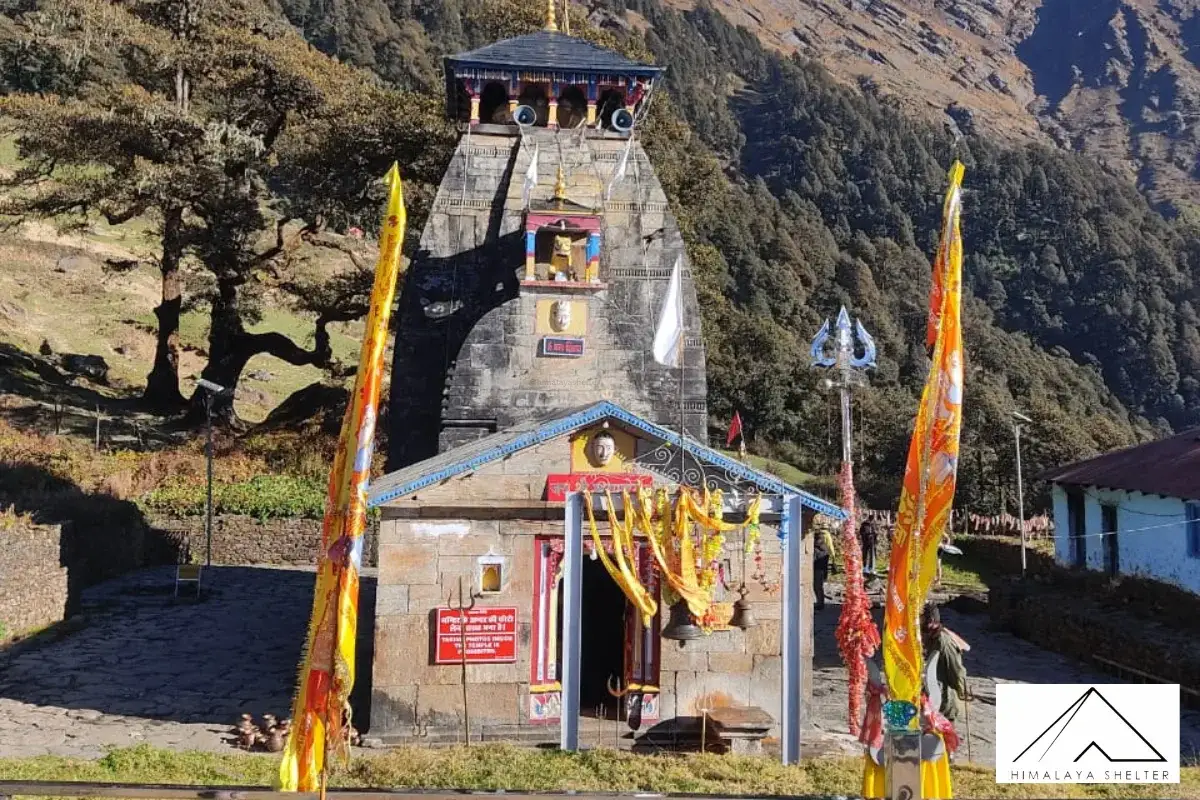
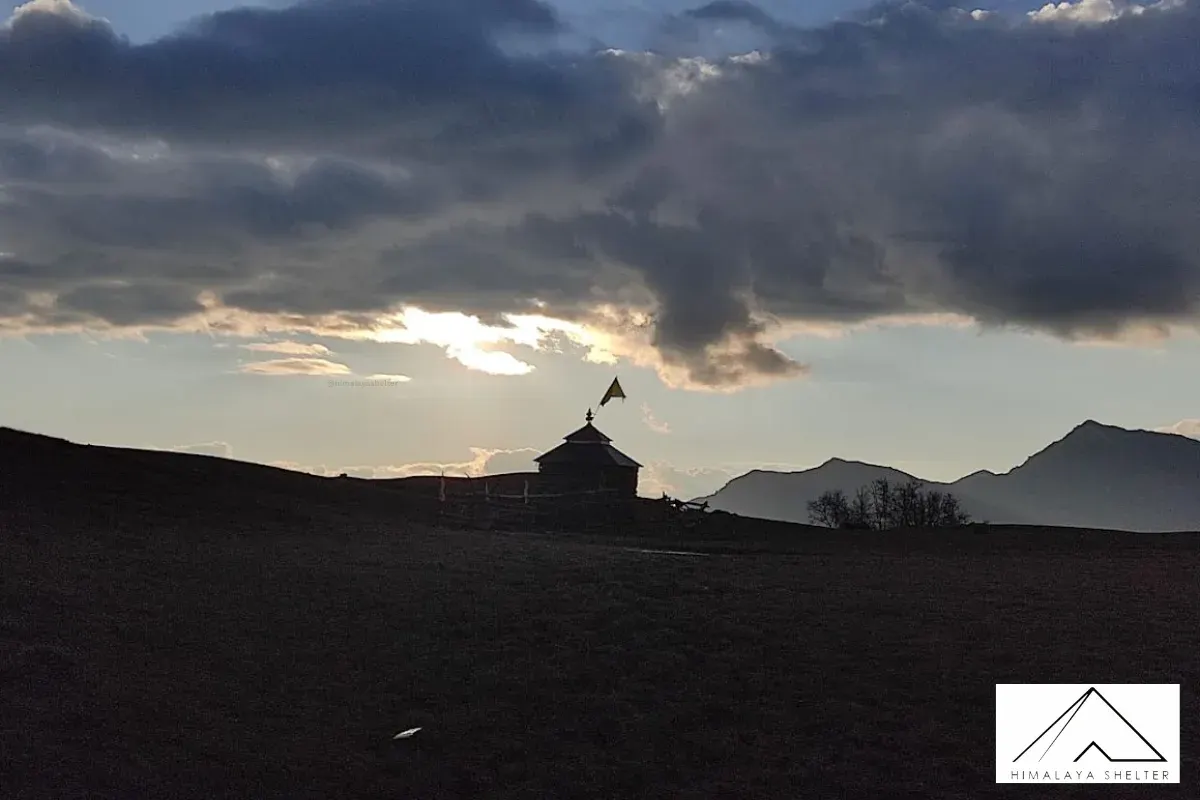
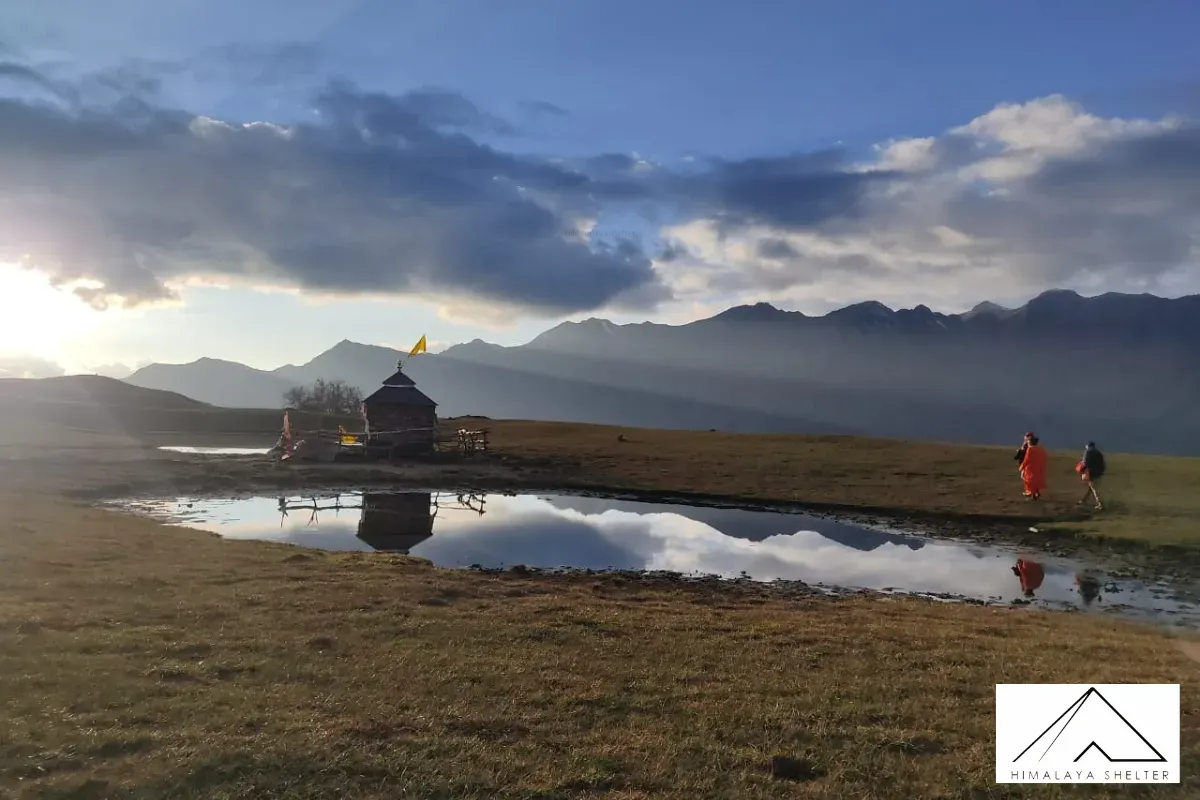
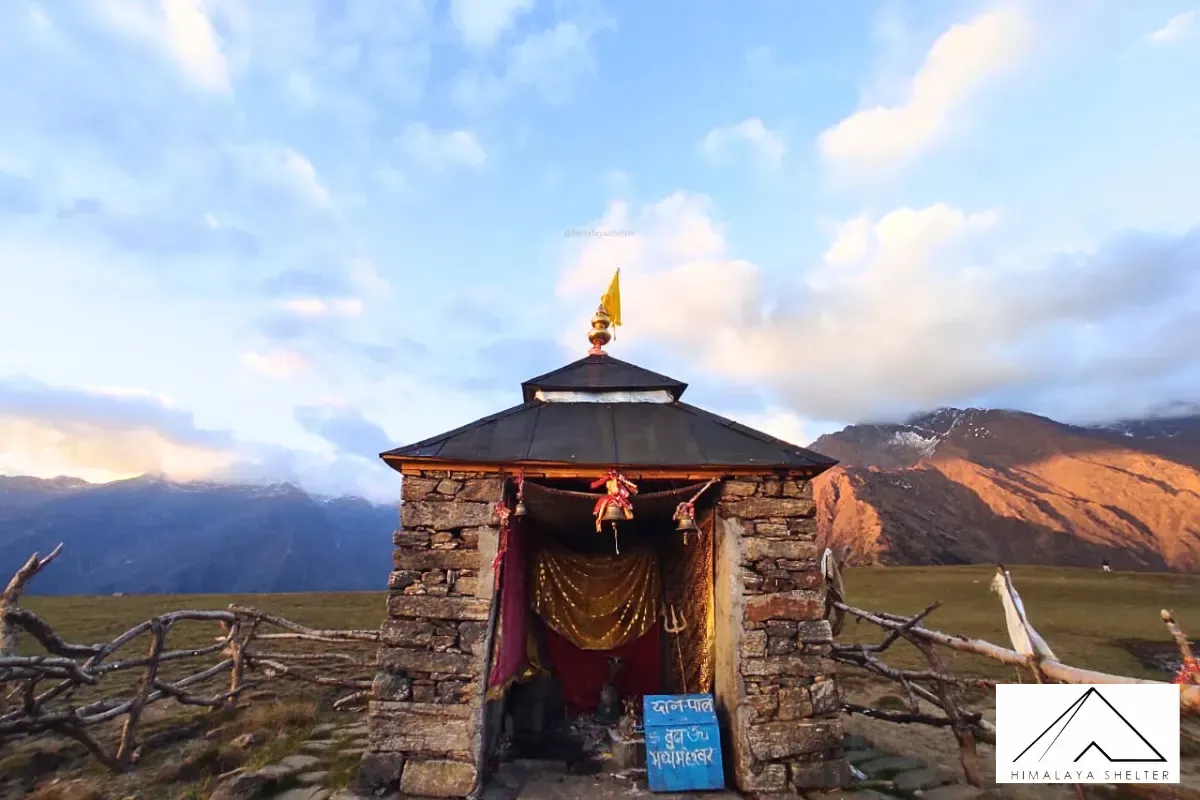
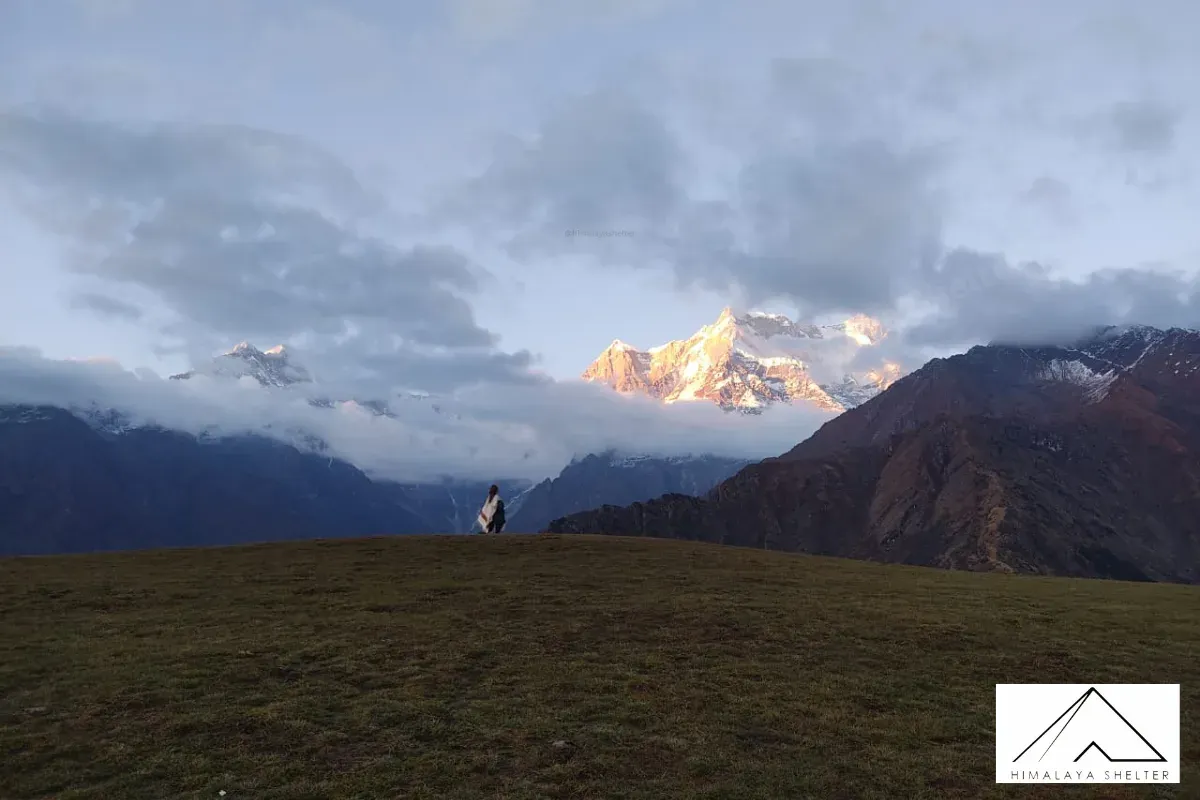
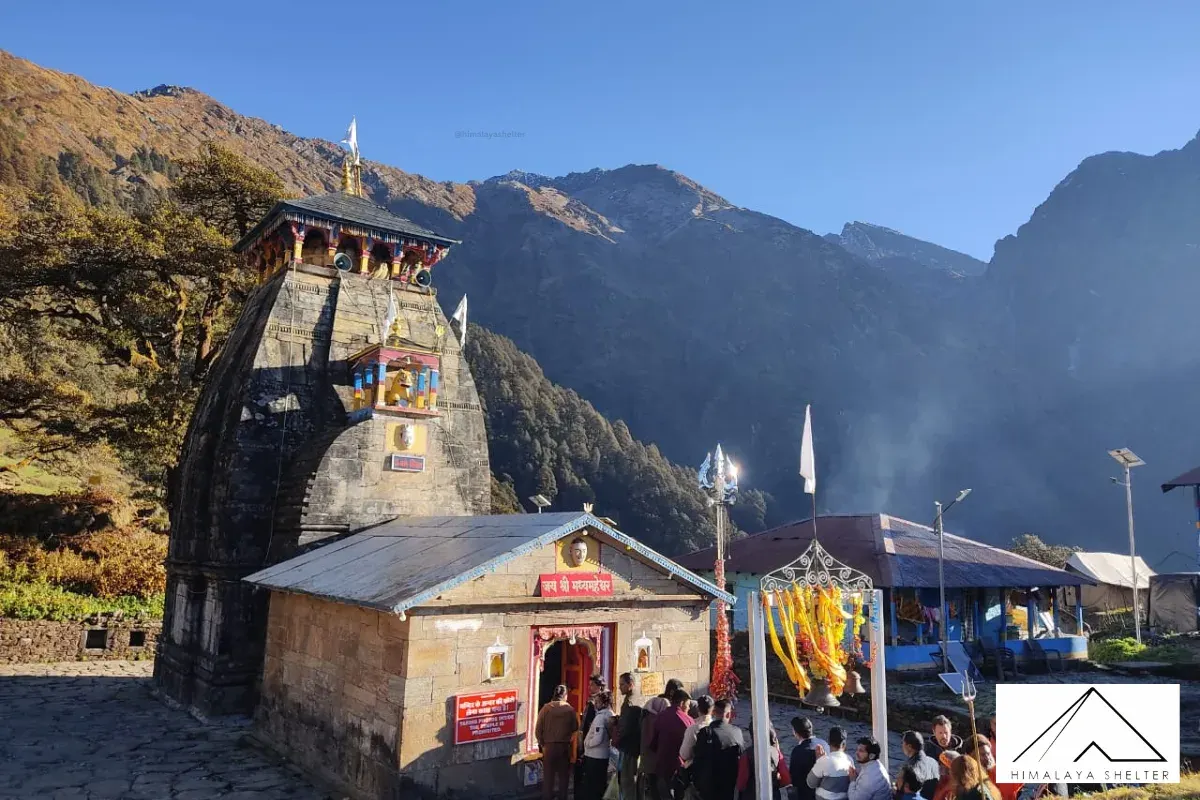
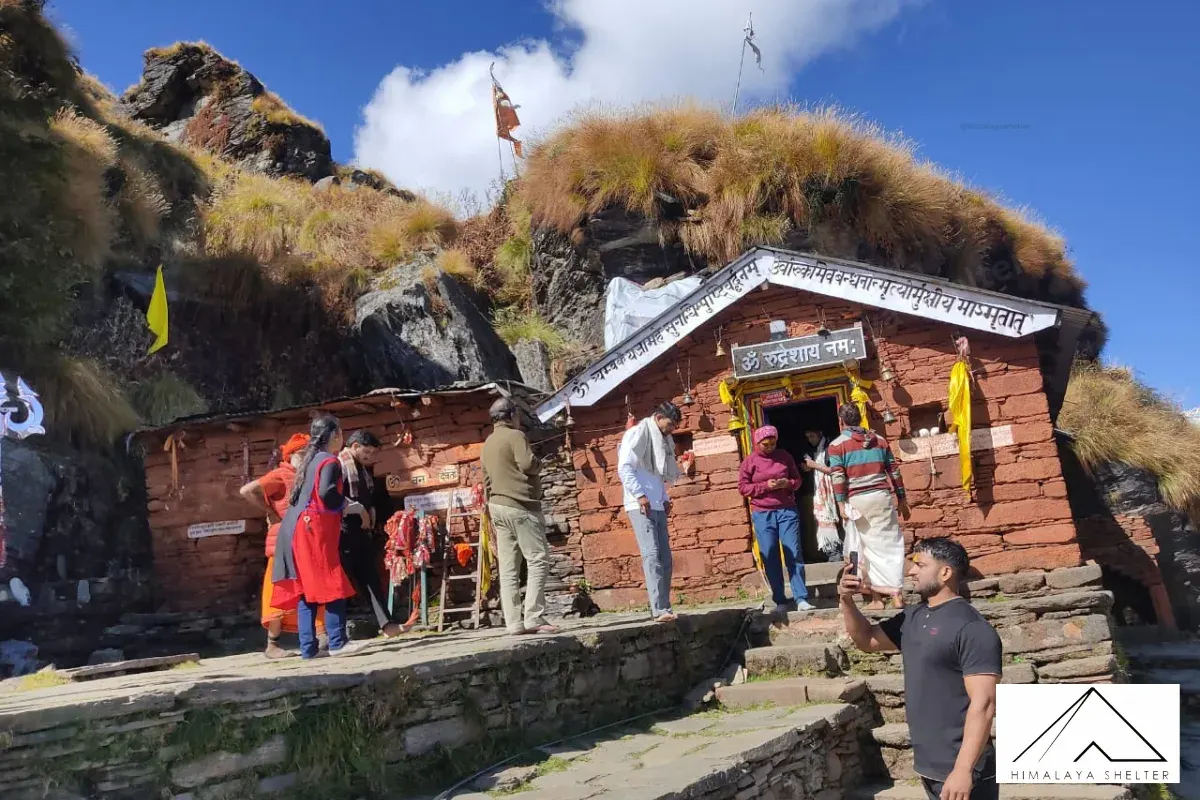
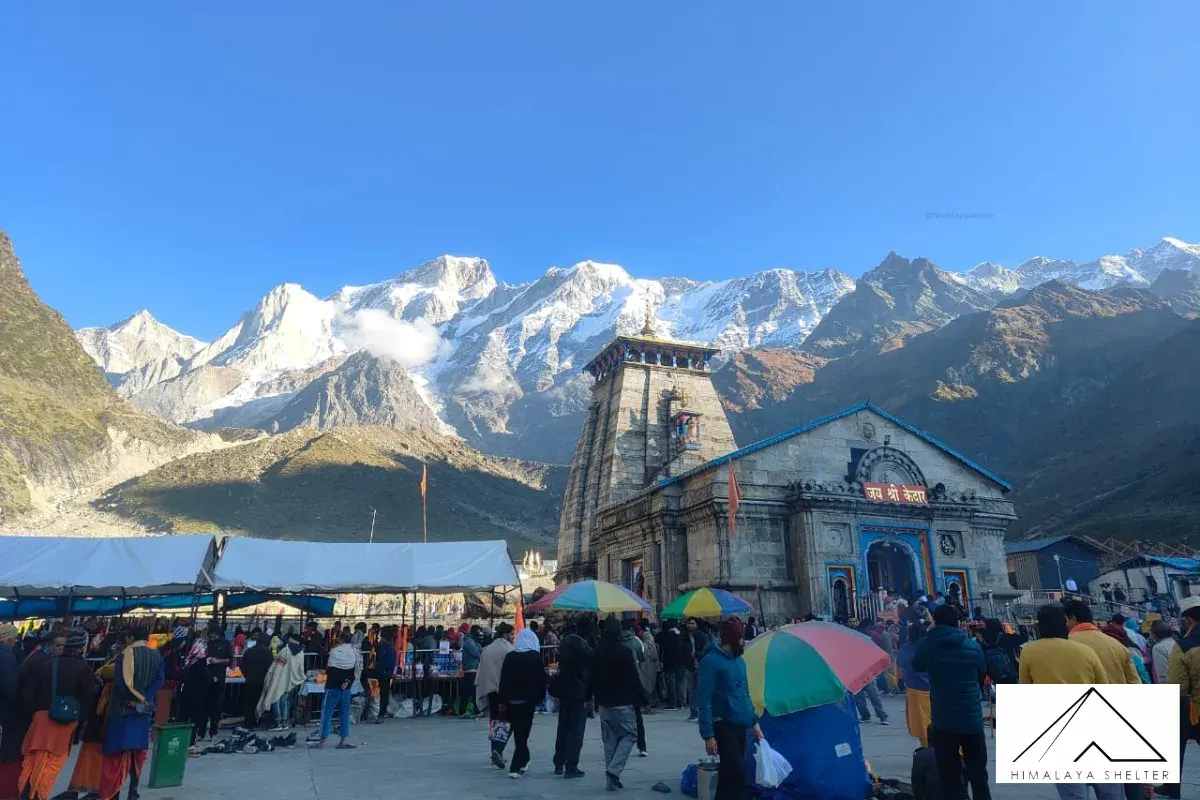
Treks by Categories
Treks By Month

Treks By Experience

